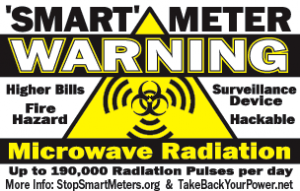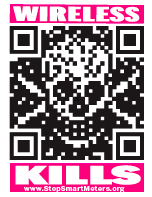Schools in California and beyond are transitioning away from books to computer based learning. In many cases they’re using wireless computers (iPads) to teach at least two subjects, math and language arts. This is part of a new federal curriculum called Common Core.
In my comments to the Sebastopol Union School District I advocate for an alternative technology plan creating a hardwired computer lab for testing and test preparation. Click here to view the original Letter to SUSD
In Sebastopol the school district is presenting their technology plan on Wednesday September 18 at 4:30 at 7611 Huntley Ave.
9/16/2013
To: Members of the School Board, staff, and teachers
Sebastopol Union School District
7611 Huntley Ave. Sebastopol CA. 95472
Re: Comments on Common Core Technology Plan
The Sebastopol Union School District (SUSD) board is considering adopting a technology plan that converts students from book based learning to computer based learning and testing. This will be presented on September 18 at the board meeting as agenda item 9.1,1, and possibly be adopted at the next board meeting in October. As a parent of a sixth grader at Brookhaven, and director of the EMF Safety Network, I ask SUSD to apply the precautionary principle and adopt an alternative plan that reduces and limits children’s screen time and wireless exposure.
An alternative plan is to create a hardwired computer lab, for testing and test preparation, instead of using computers in classrooms for lessons and testing. This request is based on health advocacy warnings and recommendations from the World Health Organization, American Academy of Pediatrics, Kaiser Permanente, American Academy of Environmental Medicine and other medical and science experts.
According to a Kaiser Family Foundation survey in 2010, children between the ages of 8-18 spend an average of 7 hours and 38 minutes on technology every day.2
- How many more hours of screen time will children have if schools convert to computer based learning?
- Will children also be expected to do their homework on computers?
- Will the new technology and supporting infrastructure be wired or wireless?
- Are parents adequately informed and included in the decision making process on whether or not to increase their children’s computer use?
Apply the Precautionary Principle to Ensure Safer Learning in Schools
The Precautionary Principle is based on ‘do no harm’ and ‘better safe than sorry’ philosophy. “When an activity raises threats of harm to the environment or human health, precautionary measures should be taken even if some cause and effect relationships are not fully established scientifically. 3
Kaiser Permanente recommends limiting screen time to less than 2 hours a day for teens, less than 1 hour a day for children ages 3 through 12, and no screen time for children under 3. 4 Kaiser explains: “Alot of kids spend more time in front of a screen than they do reading, talking with family and friends, or playing outside. It’s also affecting their health. Too much screen time is associated with: violent behavior, poor school performance, lower reading scores, sleep pattern disturbances, being overweight, consumption of junk food and bad habits later in life (like tobacco and alcohol abuse).”
The American Academy of Pediatrics states,“…studies consistently show that older children and adolescents utilize media at incredibly high rates, which potentially contributes to obesity and other health and developmental risks.”The Academy supports limiting screen time and media use for children and adolescents. 5
Wireless is a Health Risk and a Possible Carcinogen
In May 2011,the World Health Organization classified wireless radiation a possible carcinogen6. This classification is based on studies linking cell phone radiation to brain cancer, but it also applies to all wireless devices, including wi-fi routers and computers.
The American Academy of Environment Medicine (AAEM) in a letter7 to Los Angeles Unified School district (LAUSD) discusses why precaution for wireless is warranted and strongly recommends hardwiring computers in schools. AAEM writes, “There is consistent emerging science that shows people, especially children are affected by the increasing exposure to wireless radiation….Adverse health effects from wireless radio frequency fields, such as learning disabilities, altered immune responses, and headaches, clearly exist and are well documented in the scientific literature”.The AAEM states 3% of children and staff will be immediately affected 30% will have time-delayed reactions.
Apple provides warnings about health risks of iPads8 including headaches, blackouts, seizures, convulsion, eye or muscle twitching, loss of awareness, involuntary movement, or disorientation. There are consumer complaints about iPad health symptoms on the Apple support Forum.9“Is it just me or someone else also feels dizzy or nausea after using iPad for a while?
“YOU ARE NOT ALONE!!! I’ve been getting it too…”
” I have the same problem you have… I looove the ipad but I don’t think I can keep it as I get nausea and feel a bit dizzy just using it for a few minutes.”
“… just today finished series of tests…echocardiogram, brainscan, ultrasound on carotid artery,..the works…to diagnose dizziness, and even one fainting episode..since Xmas. Guess what I got for Christmas…iPad…”
Federal Safety Guidelines Don’t Protect Children
The Federal Communications Commission (FCC) wireless guidelines are for short term (30 minutes) thermal exposures only. There are no safety guidelines specific to children. The FCC is currently reviewing their guidelines, based on a US Government Accountability Office request.10
Dr. Martha Herbert, a Harvard pediatric neurologist and neuroscientist writes,“Children are more vulnerable than adults, and children with chronic illnesses and/or neurodevelopmental disabilities are even more vulnerable… Current technologies were designed and promulgated without taking account of biological impacts other than thermal impacts. We now know that there are a large array of impacts that have nothing to do with the heating of tissue. The claim from wifi proponents that the only concern is thermal impacts is now definitively outdated scientifically.” 11
Dr. Ted Litovitz, physicist, stated many studies are showing biological effects below the FCC thermal limit, including psychological changes, stress response, DNA damage, and affects on the immune system, heart, and blood brain barrier. According to Dr. Litovitz biological effects are seen at 75,000 times below the FCC guideline!12
Create a Hardwired Computer Lab and Limit Screen Time
Faced with new testing standards and a new common core curriculum the schools are caught between new government mandates and health authorities safety recommendations. SUSD should not mandate computer based learning and computers in the classrooms. Instead, use the funding to create a hard wired computer lab, and limit children’s use to testing, and test preparation. Provide waivers for those parents, or students opposed, or medically unable to test on computers.
Some students will not feel well in a computer based environment and this will affect their ability to concentrate and learn. In Canada one family has sued the school district because the wi-fi in school makes both their children sick. With public schools throughout California and beyond transitioning to wireless computer based learning, this problem will only increase. What will SUSD do to keep more vulnerable children safe?
Furthermore, while you have the funding to upgrade technology, its a great opportunity to ensure all internet connections, including teachers and staff computers are hard wired for the safety of students, teachers and staff. Please keep the phone lines within the school wired and corded too!
Please feel free to contact me with your comments and or questions. I regret I will not be able to present this information in person on Wednesday.
Thank you for your consideration,
Sandi Maurer
EMF Safety Network
PO BOX 1016
Sebastopol, CA 95473
“I have no doubt in my mind that at the present time, the greatest polluting element in the earth’s environment is the proliferation of electromagnetic fields. I consider that to be far greater on a global scale than warming, and the increase in chemical elements in the environment.’’- Dr Robert O. Becker, Author of Cross Currents and The Body Electric
Footnotes
1 http://webschoolpro.com/home/CA49709386052211/Agenda%20September%202013/CCSS%20Expenditure%20Plan%2013-14-1.pdf
3 Science and Environmental Health Network FAQ http://www.sehn.org/ppfaqs.html
4 Kaiser Permanente: “Limit Screen Time for healthier Kids”
7 AAEM letter to LAUSD: http://aaemonline.org/images/LettertoLAUSD.pdf
12http://emfsafetynetwork.org/?p=11094
Additional Resources
The BioInitiative 2012 Report is an analysis by 29 independent scientists and health experts from around the world about possible risks from wireless technologies and electromagnetic fields. http://www.bioinitiative.org
Wi-fi in schools video: A ten minute introduction to wireless precaution in schools (Australia) http://youtu.be/GJPTzaNkcUk
Professor Olle Johansson Warns of Wireless DNA Damage to children / two minute video http://emfsafetynetwork.org/?p=9990
Is Wi-fi Safe? http://emfsafetynetwork.org/?p=10576 video
Excerpts from eight expert letters submitted to the LAUSD, by Joel Moskovitz, PhD, Director, Center for Family and Community Health,
School of Public Health, UC Berkeley: http://www.saferemr.com/2013_03_01_archive.html
‘Safe Schools 2012′. Medical and Scientific Experts Call for Safe Technologies in Schools. http://wifiinschools.org.uk/resources/safeschools2012.pdf
Scientific Panel on Electromagnetic Field Health Risks: The Selentun Statement
http://www.sagereports.com/smart-meter-rf/docs/Fragopoulou_et_al_2010b.pdf
EMF World Concerns Summary: A compilation of what government, public health and environment organizations and officials, independent scientists, health advocacy groups and activists are advocating around the world in response to the proliferation of EMF, and especially wireless radiation. http://emfsafetynetwork.org/?p=116
Wi-fi in Schools, a consumer advocacy website focused on wi-fi in schools: http://wifiinschools.com/
 An international organization of physicians and scientists recognize smart meters are harming people’s health. They say, “The evidence is irrefutable.” and call for further research, accommodations and avoidance of smart meters. This new statement is based on a review of cases by Dr. Lamech in Australia. Here’s their recently adopted statement: Smart Meter Case Series
An international organization of physicians and scientists recognize smart meters are harming people’s health. They say, “The evidence is irrefutable.” and call for further research, accommodations and avoidance of smart meters. This new statement is based on a review of cases by Dr. Lamech in Australia. Here’s their recently adopted statement: Smart Meter Case Series

